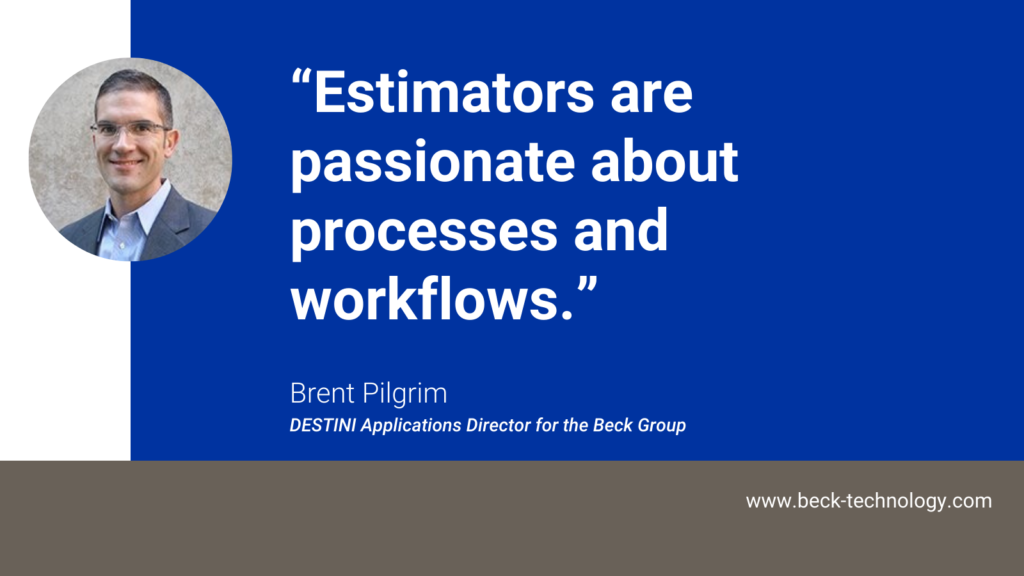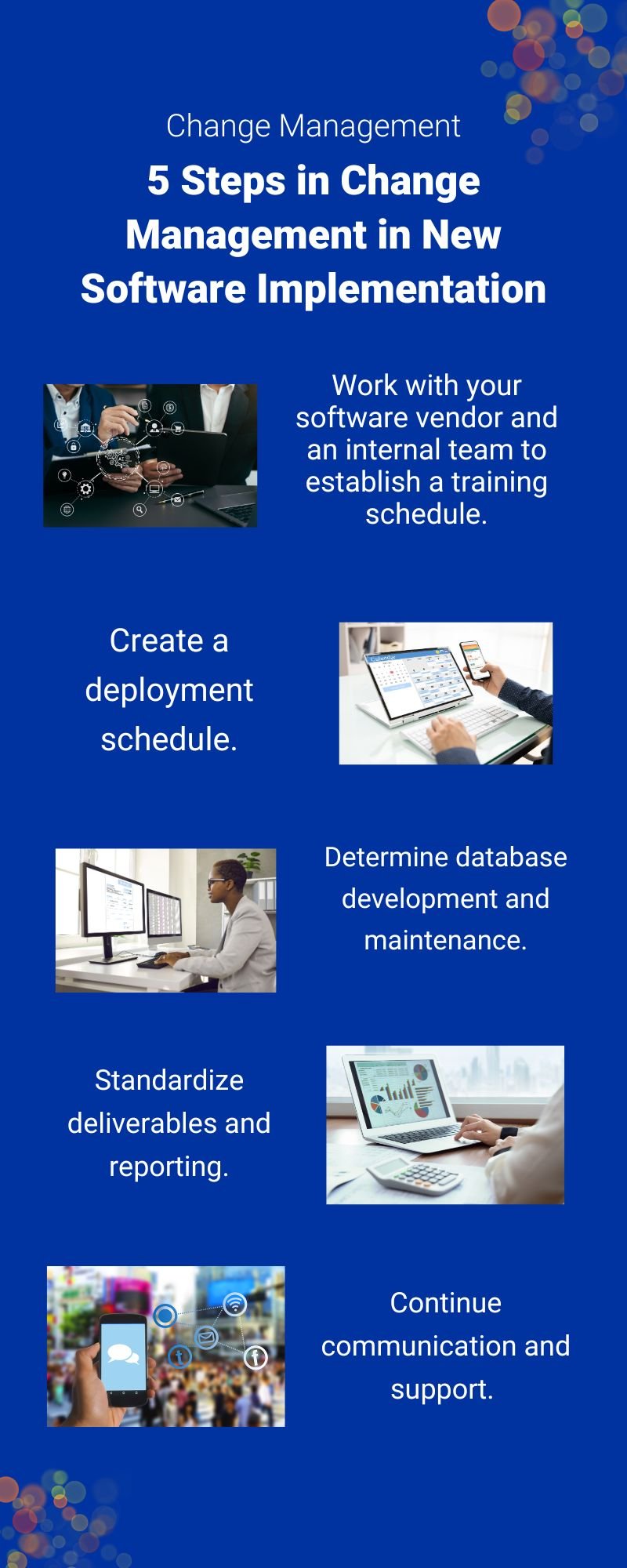Change Management in New Software Implementation
The Beck Group, a large integrated design-build firm based in Dallas, Texas, with a team of about 40 estimators had been using Timberline for over 10 years. In 2017, they began the exploration of Beck Technology’s construction estimating software, DESTINI Estimator.
Brent Pilgrim, DESTINI Applications Director for the Beck Group says the preconstruction team put a lot of “blood, sweat, and tears” into Timberline. So why the change after so much investment in their legacy software? Brent cites the following five reasons why the Beck Group switched from Timberline Sage to DESTINI Estimator preconstruction estimating software:
- Timing
- Talent
- A new era of preconstruction and estimating
- Support the mission to be innovative and integrated
- It is the right tool that supports the Beck Group’s target value design efforts
The Beck Group knew that DESTINI Estimator would:
- Reduce corporate software expenses (Estimator replaces OST, Assemble, and Timberline)
- Offer continuity from DESTINI Profiler
- Provide value
- Be easy to use
However, making such a massive change requires change management.
What is Change Management?
Change management is the way a company or organization implements change in business processes.
It includes how the organization defines the change, its support of employees during the change, and outlining and following through the way the change will occur.
Change requires multiple departments and leadership to work together to understand why the change is important and to help communicate not only the why, how, and when the change is going to happen but also the value and benefits of the change to those who will be affected.
Resistance to change is normal and should be expected. People like what they’re used to. Our brains are hardwired to resist change.
According to Psychology Today, the basal ganglia (which sits at the base of our brain and controls involuntary movement and motor control as well as plays a role in planning, problem-solving, emotion, and reward) powers our habits and routines, and either unintentionally or intentionally, we generally fall back on to what we know. We are truly creatures of habit.
When change is introduced, adapting to a new routine takes conscious effort and it is much easier to stick with what we know. Psychology Today writes, “Change requires resisting well-established behavioral patterns, which means that you will be working against unconscious, automatic processes that are designed to make life easier.”
Switching software, whether that be construction estimating software, accounting software, task management software, or any other program you work in is a big undertaking, not only in time and resources but financially, as well. The way you handle the switch can determine how successful your team will be using the new software.
 How to Effectively Handle Change Management When Implementing New Software
How to Effectively Handle Change Management When Implementing New Software
Once your company has established moving forward with new software, the biggest challenge is introducing it to your team. One of those challenges is tackling resistance to the change.
Brent says one of the most important pieces of the process is to recognize and address the known challenges, “Estimators are passionate about processes and workflows.” An important piece of change management is bringing everyone together and showing them the value of what the tool offers.
Estimating is a personalized process. Brent says, “People have a certain way of doing things and as creative as estimators can be, we’re probably also the ones very guilty of ‘this is the way I’ve done it for 10 years and I don’t really see a reason to change.’” It can be tough for some to switch from their legacy software; so, you must show your precon team the value the new tool offers. Identify the potential problems and roadblocks, address them in advance, and recognize the team’s concerns.
Acknowledge the concern of loss of productivity during the ramp-up phase of implementation, accept the imperfections in the product, recognize there will be unknowns, and commit to the known hardships of implementing new software. Brent says to be “compassionate and empathetic” and once they see the value of what the tool brings to the table, you will no longer face resistance.

To Complete the Change
- Work with your software vendor and an internal team to establish a training schedule.
- Create a deployment/phasing schedule.
- Determine database development and maintenance.
- Standardize deliverables and reporting.
- Continue communication and support. The Beck Group holds weekly user group meetings to discuss tips, tricks, and challenges. They also have a team to handle support internally and encourage the use of Beck Technology’s online community. (Include link)
Brent says, “Change management is all about communication and making sure people know where we are going, why we’re going there, and what we’re doing about it.”
For Brent and the Beck Group, the successful switch from Sage Timberline to Beck Technology DESTINI Estimator has been because of Brent and his team’s top-down and bottom-up approach to change management.
To learn more on how to help your team make the switch from your current estimating software to the best estimating software for preconstruction, watch this video on why The Beck Group, switched to DESTINI Estimator after more than 10 years with Timberline as their primary estimating software.

-1.png?width=112&height=112&name=image%20(4)-1.png)












